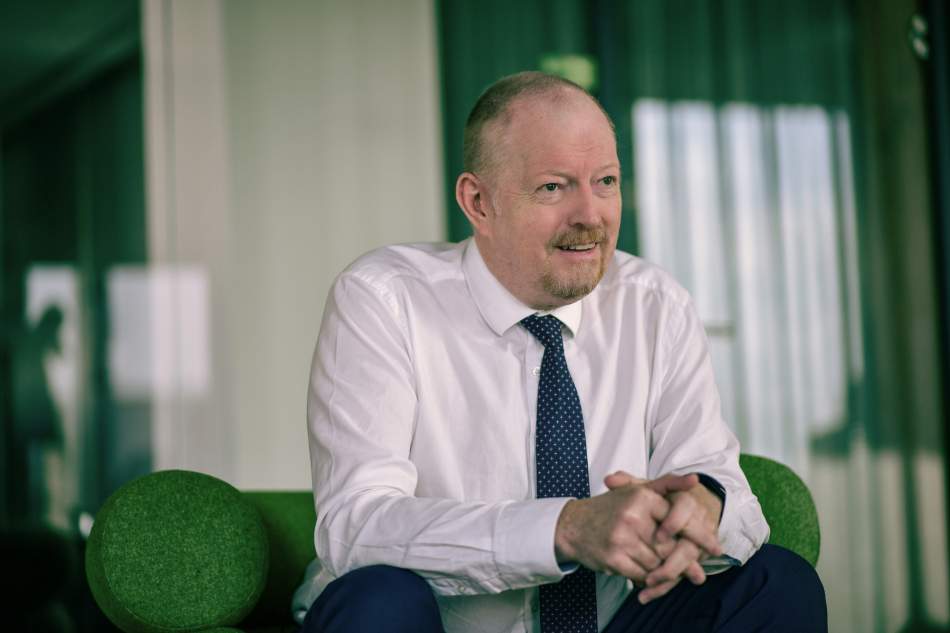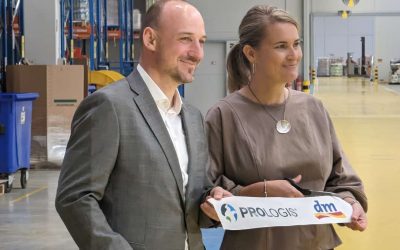You managed to get substantial financing from bond investors when that was advantageous without burning your bridges with the banks. What’s your strategy at this point, given the uncertainty of whether, or at least how fast, the ECB is likely to cut rates?
One of the key tasks we have is to make sure that we have liquidity at all times. To a certain extent, we’re agnostic about where the money comes from, as long as it’s within the parameters that we need. Before we got our investment grade ratings in September 2020, we were financed 100% by senior secured funding with a number of banks with whom we had long and successful relationships for over a decade. With the Investment Grade ratings, we got access to the bond markets at a time when they were much more attractive than the banks, so we shifted our funding base quickly to a more unsecured basis, in January 2022 we were more like 85% unsecured and 15% secured. As a regular bond issuer, we’re committed to having a more unsecured funding base than secured funding base, indeed that is one of our bond covenants.
But secured funding remained an important part of our funding mix, we never repaid our relationship banks in full. This meant that when the bond market closed for real estate issuers in Q1 2022, we were able to pivot back to our banking partners for support with financing.
Through 2022 and 2023, we raised over EUR 2 billion in loans from our banking partners, including our first significant unsecured bank loans. At the end of 2023 we were financed on a 60% unsecured, 40% secured mix.
We’re happy to have the bond market re-opened now. We did our first bond for over two years in February, which was very well received by the markets. Our strategy now is about having as many pools of liquidity that you can tap as possible. In 2023, we raised over €1.5 billion from the bank markets, and for the first time we got almost EUR 650 million of unsecured bank lending, which is something we hadn’t had before last year.
It wasn’t possible before?
All of these things were technically possible before. It’s just practically speaking we hadn’t tried to raise unsecured bank loans. 2022 was a year that was very difficult for creating new relationships, so 2022 and the first part of 2023 was more about leveraging our existing relationships. As you say, we didn’t burn our bridges with the banks when we got access to the bond markets. When the bond markets closed, we were able to go back to our friends in the banks and raise the money we needed to keep growing and meet the demands of our tenants from them. Unsecured lending comes from a different set of banks, so it’s about finding the best way to get access to them.
The main priority is to focus on building long-term relationships and ensuring the ability to engage in future transactions. Because we want to grow — we want to get to our 20 million sqm target by the end of the decade. To do that we’ll need to borrow more money over the next years so we’re going to be repeat issuers on the bond market and repeat borrowers with the banks. And as with every relationship, if the last deal was a good one for both sides then the next one is easier to do.
If you push too hard, you might get the deal but it might not be there next time.
In this world, what goes around comes around. If you’re a repeat issuer, you want to have a good relationship with as many people as you can. You can’t please all the people all the time, that’s impossible. But you have to have enough people happy with you on an ongoing basis.
Does it make sense to try to guess what’s going to happen with euro base rates? Or is it enough to know they’re not going higher?
I think euro interest rates will come down. Whether the ECB cuts for the first time in June, December or even January next year doesn’t make that much difference. As long as they’ve stopped raising rates, that’s the really important signal. Cuts would be nice to have, but in reality, if you look at the yield curve, the long-term government bond markets are already pricing in material rate decreases over the next one or two years.
We have a running yield that’s higher than market yield and we produce higher-than-market yield on cost of our developments. That means we’re better able to cope with higher interest rates than most, so we’ve been able to continue developing through the whole interest rate cycle. It gave us a good opportunity to create new tenant relationships and strengthen existing ones. For us, having access to liquidity gave us a competitive advantage last year.
Is the necessity of investing in ESG a burden? Or is it a competitive advantage for some companies who can handle it?
At CTP, we’ve consistently exceeded industry standards, driven by our commitment to the long-term sustainability of our buildings. Our focus on energy efficiency not only ensures compliance with regulations but also positions us as less vulnerable to future mandates. By prioritizing quality investments upfront, we recognize the significant cost savings over a building’s lifetime. While many landlords aim to minimize short-term expenses to maximize returns, we hold our properties long-term. Moreover, we’ve observed a growing interest in ESG aspects from clients, particularly international ones, who increasingly have their own sustainability targets. Additionally, our emphasis on community engagement has long been part of our identity and serves as a key differentiator.
Can’t you charge more on rent if your building is more efficient?
You would think so, but that depends on whether the real estate arm of the corporation is measured on the amount of rent they spend or the total cost of occupancy in the location. If they’re measured on the total cost of occupancy, you can charge a higher rent for a more efficient building. You can’t if they’re measured on the amount they spend on rent. A lot of companies are still not measuring the total cost of occupancy. However, we see the willingness of tenants to pay up for more energy efficient buildings increase.
Also in ThePrime
Peter Nitschneider (iO Partners): The money’s there, but not the prices






